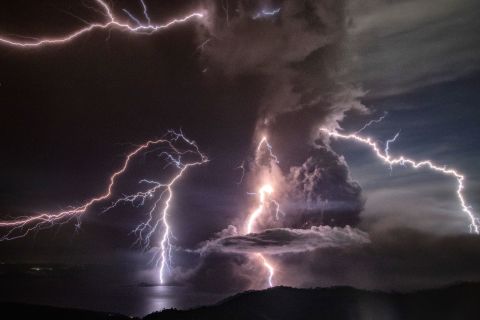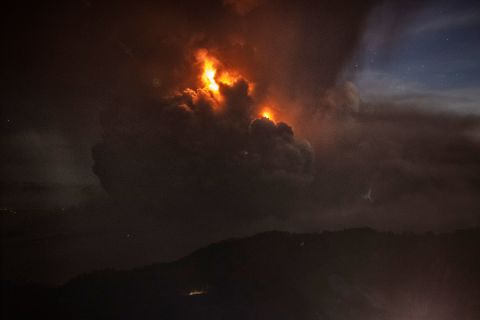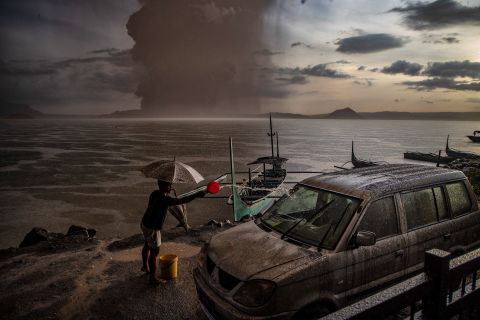Taal Volcano in the Philippines has sent an eruption plume a kilometer above the crater, according to the Philippine Institute of Volcanology and Seismology.
The agency says Taal is showing a "fast escalation" in volcanic activity and could erupt lava within weeks.
Evacuation orders have been ordered for three towns in Batangas, Luzon, according to CNN affiliate CNN Philippines. Flights have been disrupted at Manila International Airport.
The state-run Philippines News Agency reported that minor earthquakes have also been recorded.



The Taal Volcano in the central Philippines rumbled to life on Sunday, spewing ash and prompting evacuations in nearby communities -- and officials warn that a more powerful eruption is imminent. The volcano is located on the island of Luzon and is the country's second most active volcano.
The Philippine Institute of Volcanology and Seismology (PHIVOLCS) raised the status of the Taal Volcano to an Alert Level 4 late Sunday, local time, indicating a hazardous eruption is possible within hours to days. The volcano was at an Alert Level 1 on Sunday afternoon. The alert system has five levels with Alert Level 5 meaning a hazardous eruption is in progress.
Ashfall was reported in metro Manila, located about 101 km (63 miles) north of the volcano, on Sunday evening, according to CNN Philippines.
"Southerly winds are helping to carry volcanic north across northern Luzon," stated AccuWeather Meteorologist Maura Kelly. "Winds across the northern Philippines are forecast to turn out of the northeast throughout the day on Monday, which can help to gradually direct the ash plume out over the South China Sea and away from Manila."
Due to the eruption, all flights, both arrival and departures, at Ninoy Aquino International Airport are now on hold. Passengers are advised to coordinate with their respective airlines for flight updates.
Evacuations are underway for an unknown number of people in the municipalities of San Nicolas, Balete and Talisay, according to The Philippine Star.
"Magma is intruding from below. If eventually this will continue to move up, then there can be a magmatic eruption which is more dangerous," Renato Soldium, PHIVOLCS officer-in-charge, told CNN Philippines.
No comments:
Post a Comment